

On this month's Morbidly Fascinating Page:
The Bog Bodies
IN THE ARCHIVES:
Google Maps
Preserved
Last Meals
Utrecht Hospital
Dinosaurs to Birds
Ghosts of Alcatraz
Ancient bodies found in peat bogs

Above is a map listing where bog bodies were found.
Tolland Man




Tollund Man is the best-looking and best-known member of an elite club of preserved cadavers that have come to be known as “bog bodies.” The story of Tollund Man is like that of many of the other “bog people” discovered in the peat bogs of Northern Europe. His remains were uncovered in 1950 by villagers in the town of Tollund, Denmark, who were gathering peat for fuel.
Initially his remarkable state of preservation led the villagers to believe they were viewing a recent murder victim and after much debate, the local police were called to investigate. Puzzled by the appearance of the remains, the police asked a scientist named P. V. Glob to come and view the discovery. Recognizing that this was an ancient burial, Glob began efforts to remove the body for further study.
Like all the “bog people,” Tollund Man showed signs of a violent death. Nude but for a leather cap and wide belt around his waist, the body was discovered with a rope tightly wound around his neck. Later research was to reveal that this Iron Age man had been hanged.
Knowledge on how to best preserve discoveries like Tollund Man was not yet known in 1950 and only the head of the original specimen was kept intact. The rest of the body was subjected to various tests to determine his probable age - 40 - and the conditions surrounding his life and death.
Tollund Man’s body was reconstructed for the exhibit which now resides at the Silkeborg Museum in Denmark. The detail evident in his face is remarkable. Stubble on his chin, eyelashes, and the wrinkles in his skin are all exceptionally well preserved. The rope used to end his life still lies wrapped around his throat and visitors can peer into the almost peaceful visage of this victim of ancient violence.
C14 radiocarbon dating of Tollund Man indicated that he died in about 375–210 BCE. The preserved tender soft tissues of his body are the consequence of the acid in the peat, along with the lack of oxygen underneath the surface and the cold climate of the Nordic countries. The acid in the peat, needed for the preservation of a human body, is caused by Sphagnum, which fights against degradation due to resistant compounds contained in their cell walls.
Examinations and X-rays showed that the man's head was undamaged, and his heart, lungs and liver were well preserved. The Silkeborg Museum estimated his age as approximately 40 years and height at 5 ft 3 in, a relatively short stature even for the time. It is likely that the body had shrunk in the bog.
Bocksten Man
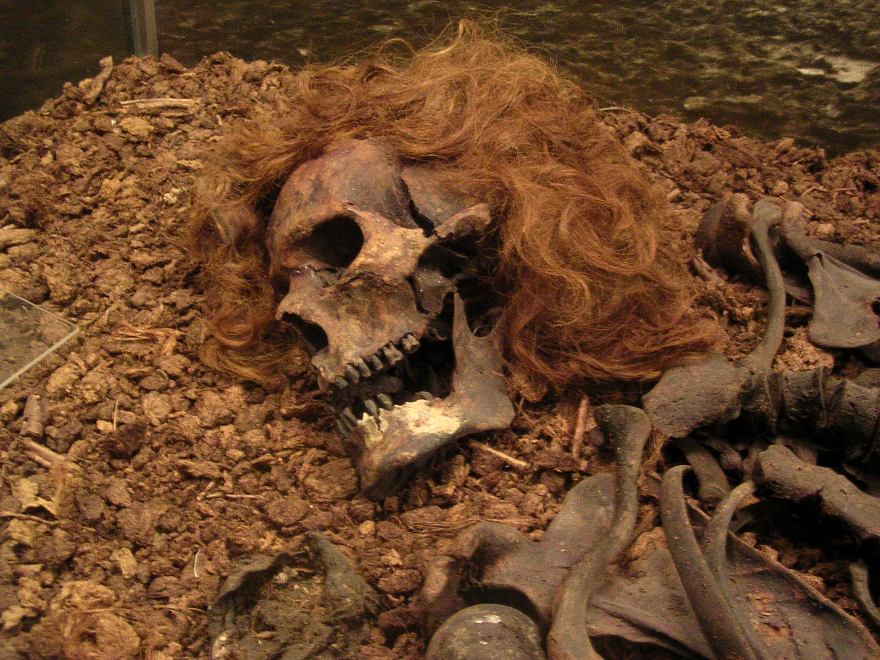

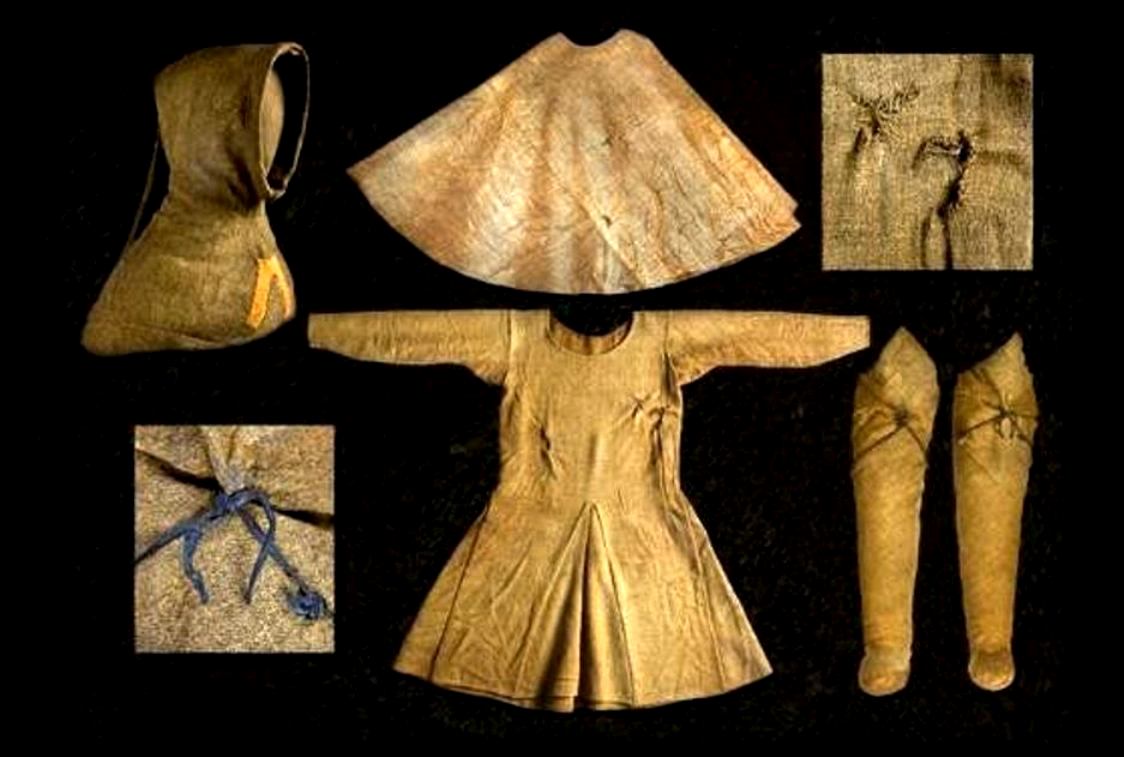
For a start, Bocksten Man’s clothing have been considered to be one of the best preserved of its kind from the Medieval period in Europe. Bocksten Man’s clothing consisted of a tunic/cote, a mantle/cloak, a hood, woolen hose, and leather shoes. In addition, he also had two leather belts and two knives on him. Bocksten Man’s clothing indicated that he had belonged to the upper classes of Medieval society, and allowed researchers to speculate on the possible reasons for his murder.
Around 700 years ago, a young man, who has come to be known as ‘Bocksten Man’, was struck three times on the head, then tossed into a peat bog and impaled with three wooden poles to prevent his body rising to the surface. What is the story behind the grisly ending to this young man’s life, and why were his killers so determined to keep his body from ever surfacing?
Bocksten Man was discovered in 1936. When the bog body was found, it was in a prostrate position, and impaled in the chest by roofing material. He was between 30 and 35 years old. It was found that his skull had been damaged by three blows from a blunt weapon, perhaps a pole or a hammer. One of these is located on the body’s lower, another near the right ear, and the last further back on the head.
One theory is that Bocksten Man had been a tax collector and that could be the reason for his murder, but no one knows for sure.
Yde Girl
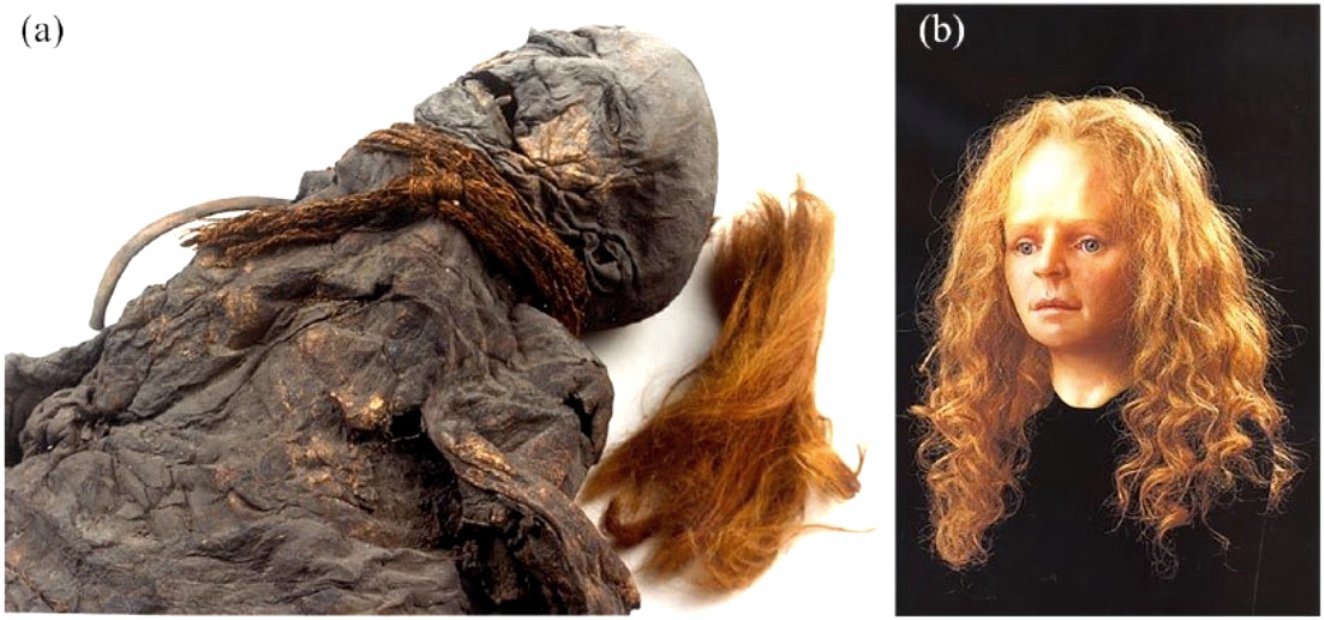
Not all of the bog bodies were men. Yde was a 16-year-old girl who was murdered. She was found on May 12, 1897 and was reputedly uncannily well-preserved when discovered (especially her hair), but by the time the body was turned over to the authorities a fortnight later it had been severely damaged and deteriorated.
Carbon 14 tests have indicated that Yde girl died between 54 BC and 128 AD. She had long reddish blonde hair, but one side of her head had been shaved before she died. (Recent studies of Windeby I have suggested that the shaved hair phenomenon in some bog bodies may simply attest to one side of the head being exposed to oxygen slightly longer than the other.) Scans have shown that she suffered from a spine condition known as scoliosis.
The body was found clad in a woolen cape and with a noose wrapped around the neck suggesting she was executed or sacrificed. There was also a stab wound in her collarbone, but that was not determined as cause of death. As with most bog bodies, the skin and features are still preserved, thanks to the tannic acid in the marsh water. When Yde Girl was excavated, the diggers accidentally split her remains in half, effectively destroying her torso.
See more HERE
Clonycaven Man


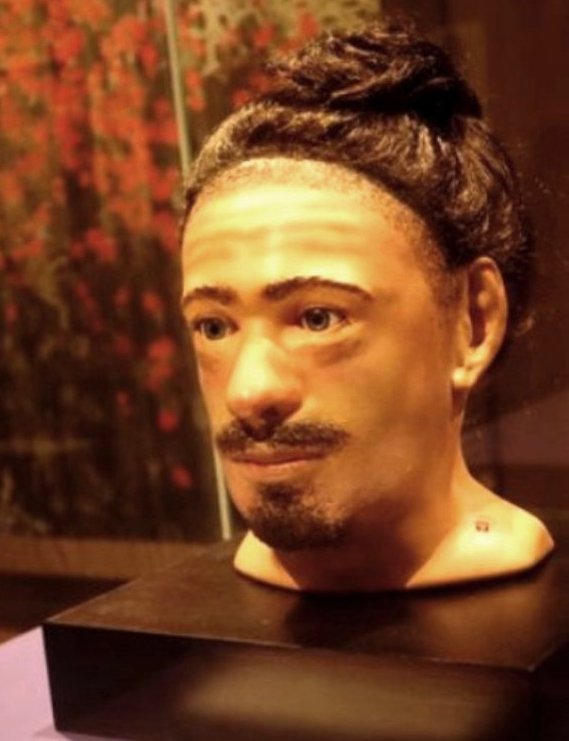
Only Clonycavan Man's head and torso are preserved. He was found in 2003 a modern peat harvesting machine, which was responsible for the severing of his lower body. Radiocarbon dating showed that Clonycavan Man lived between 392 and 201 B.C.
Scientific study of Clonycavan Man's hair has shed light on his diet leading up to his death. His diet was rich in vegetables and proteins, which indicates that he may have been killed during the warmer summer months. Clonycavan Man was also fairly young at the time of his death; he is believed to have been in his early twenties.
The most distinguishing feature of the man was his hairstyle, which was raised upon his head with the help of a hair gel of plant oil and pine resin, imported from south-western France or Northern Spain. Remnants of a hair tie was also found on the corpse. This may attest to trade between Ireland and southern Europe in the fourth and third centuries BCE, before Roman influence was brought to bear on the Celts of Iberia. This could also suggest that he was wealthy, as few others would have been able to buy imported cosmetics. The hairstyle was possibly a way to make the man appear taller, as examination of his remains suggests that he was only 5 feet 2 inches tall.
See more HERE
Lindlow Man
.jpg)
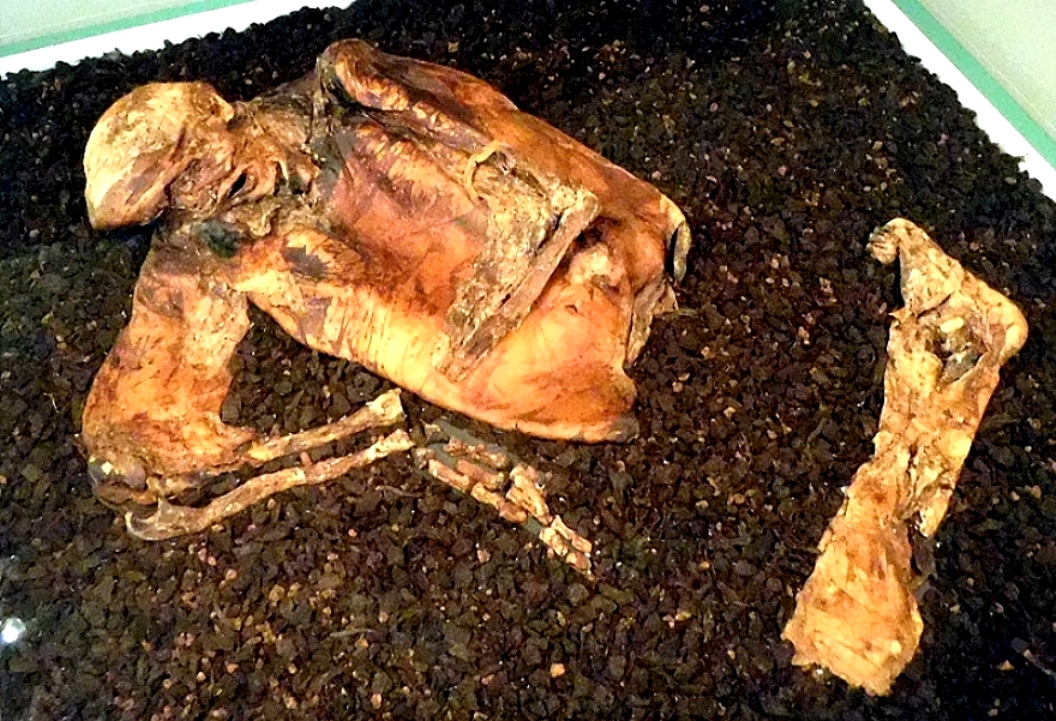
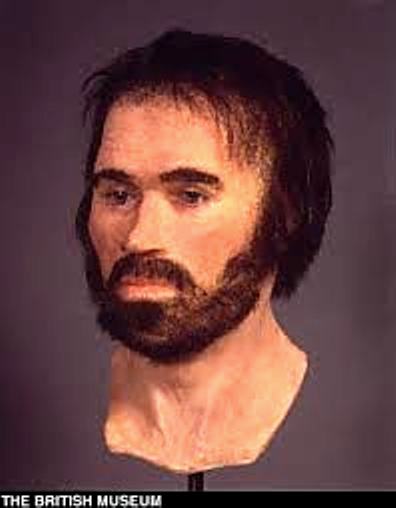
Lindow Man’s official name is Lindow II, since other human remains have also been found in the Lindow Moss bog. Only the upper half of his body was found. He had remains of a fur armband around left arm and a garott of animal sinew around neck. A right leg is also part of this body.
Lindlow Man was in his mid-20s and lived between 2 BC to AD 119. He was a healthy male, and he may have been someone of high status, as his body shows little evidence of heavy or rough work. There has been debate over the reason for Lindow Man's death, because the nature of his demise was violent.
In life, Lindow Man would have measured between 5'6" and 5'8" tall and weighed about 132 pounds, The body retains a trimmed beard, moustache, and sideburns of brown hair, as well as healthy teeth with no visible cavities, and manicured fingernails.
Most of the Bog Bodies were murder victims, and Lindlow Man appears to be no exception.
See more HERE
What is a Bog Body?
A bog body is a human cadaver that has been naturally mummified in a peat bog. Such bodies, sometimes known as bog people, are both geographically and chronologically widespread, having been dated to between 8000 BCE and as recently as 2003. The unifying factor of the bog bodies is that they have been found in peat and are partially preserved; however, the actual levels of preservation vary widely from perfectly preserved to mere skeletons.
Unlike most ancient human remains, bog bodies often retain their skin and internal organs due to the unusual conditions of the surrounding area. These conditions include highly acidic waterr, low temperature, and a lack of oxygen which combine to preserve but severely discolor their skin, making them seem like they had a tan. While the skin is well-preserved, the bones are generally not, due to the acid in the peat having dissolved the calcium phosphate of bone.
The vast majority of the bog bodies that have been discovered date from the Iron Age, a period of time when peat bogs covered a much larger area of northern Europe. Many of these Iron Age bodies bear a number of similarities, indicating a known cultural tradition of killing and depositing these people in a certain manner. These Pre-Roman Iron Age people lived in sedentary communities, who had built villages, and whose society was hierarchical.
Many bog bodies show signs of being stabbed, bludgeoned, hanged, or strangled, or a combination of these methods. In some cases the individual had been beheaded. In the case of the Osterby Man found at Kohlmoor, near Osterby Germany in 1948, the head had been deposited in the bog without its body.
Most of these bog bodies were murder victims.
See HERE
Why were these bodies found in peat bogs?
Ever since the Iron Age, humans have used the bogs to harvest peat, a common fuel source. On various occasions throughout history, that is why peat diggers have come across bog bodies.
Are all the bog bodies in museums?
Throughout the 18th and 19th centuries, when such bodies were discovered, they were often removed from the bogs and given a Christian burial on consecrated church ground in keeping with the religious beliefs of the community who found them. These bodies were often assumed to be relatively modern victims. That means that most of the bog bodies found in the 18th and 19th century are buried and lost to history.
With the rise of antiquarianism in the 19th century, some people began to speculate that many of the bog bodies were not recent murder victims but were ancient in origin and were turned over to museums.
Here are a few museums that display bog bodies:
DENMARK: Grauballe Man, Moesgård:The Forhistorisk Museum.
GERMANY: Neu England Man, Landesmuseum für Natur und Mensch.
NATIONAL MUSEUM OF IRELAND
THE NETHERLANDS. The Yde Girl, The Drents Museum
UNITED KINGDOM. Great North Museum